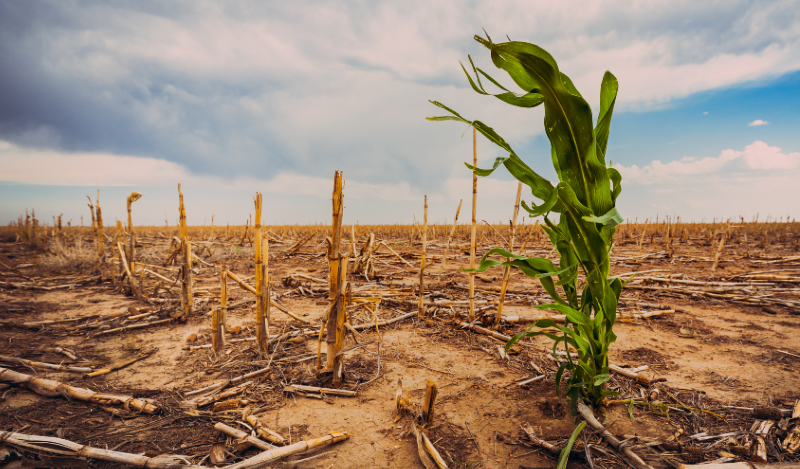
Climate Change and Food Security in 2024: Impact and Solutions
Climate Change and Food security
In 2024, climate change and food security are more interconnected than ever. Rising temperatures, unpredictable weather patterns, and extreme events like floods and droughts are increasingly threatening global food production. As these changes become more frequent and severe, it’s essential to understand how climate change is impacting food security and what solutions can be implemented to protect the global food supply. Learn more about climate-smart agriculture and its role in adapting to these changes. Addressing these challenges is crucial for ensuring food availability, affordability, and accessibility for billions of people worldwide.
Impact of Climate Change on Food Security

- Disrupted Agricultural Systems
- Climate change is disrupting traditional agricultural patterns, with farmers around the world struggling to adapt to unpredictable weather. Droughts, floods, and heatwaves are becoming more frequent, making it harder to predict crop yields and plan for harvests. Explore the effects of climate change on agricultural production. The agricultural sectors in countries like India, Brazil, and the United States have seen direct impacts, with crop failures and reduced agricultural productivity threatening food supplies.
- Rising Food Prices
- As crop yields decline due to extreme weather events, the price of staple foods such as wheat, rice, and maize has increased. In many regions, especially in developing countries, this has led to food price inflation, making it difficult for low-income populations to access sufficient, nutritious food. According to the United Nations, food prices surged by 20% globally in 2023, primarily due to climate-induced disruptions in supply chains.
- Vulnerability of Smallholder Farmers
- Smallholder farmers, who account for about 70% of food production in developing countries, are particularly vulnerable to the effects of climate change. They often lack the resources, technology, and infrastructure to withstand extreme weather events. Read about the challenges facing small farmers in Sub-Saharan Africa and Southeast Asia. In these regions, small farmers are already experiencing reduced yields, leading to food insecurity and increased poverty levels.
- Impact on Fisheries and Livestock
- Rising ocean temperatures and acidification are threatening fish stocks, which are a primary source of protein for millions of people worldwide. Simultaneously, livestock farming is facing increased challenges as higher temperatures affect animal health and productivity. The combination of these factors puts additional strain on global food security, particularly in coastal and rural areas where fishing and farming are vital to the local economy.
Solutions to Mitigate the Impact of Climate Change on Food Security
- Climate-Smart Agriculture
- One of the most promising solutions to the food security crisis is climate-smart agriculture (CSA). This approach focuses on developing farming techniques that increase productivity while minimizing the environmental impact. CSA includes practices such as crop rotation, agroforestry, the use of drought-resistant crop varieties, and the optimization of water resources through efficient irrigation systems. These strategies help farmers adapt to changing conditions while maintaining or increasing their yields.
- Investment in Sustainable Food Systems
- Governments and international organizations must prioritize investments in sustainable food systems that reduce the environmental footprint of food production. This includes promoting the use of renewable energy in farming, reducing food waste, and supporting the transition to plant-based diets, which generally have a lower carbon footprint than animal-based foods.
- Policy Reform and International Cooperation
- Addressing the food security crisis requires strong policy frameworks that integrate climate adaptation into food production strategies. This includes providing financial support for farmers to adopt climate-resilient practices, improving access to weather-related data, and fostering international cooperation to strengthen global food supply chains. Organizations such as the World Food Programme and FAO (Food and Agriculture Organization) are already working toward these goals through various climate adaptation programs.
- Technological Innovation
- Technological advancements are playing a crucial role in addressing food insecurity. Innovations such as precision agriculture, which uses sensors, drones, and data analytics to optimize farming practices, are helping farmers make more informed decisions. Additionally, breakthroughs in genetic engineering and biotechnology are producing crops that are more resistant to pests, diseases, and extreme weather conditions, offering hope for more stable food production in the future.
- Diversification of Food Sources
- Diversifying the sources of food production is another key strategy to enhance food security. Incorporating more resilient and climate-adaptive crops like quinoa, sorghum, and millet into farming systems can reduce reliance on vulnerable crops. Similarly, expanding aquaculture and sustainable fish farming practices can help alleviate pressure on wild fish stocks and provide alternative sources of protein.
Conclusion
In 2024, the challenges posed by climate change to food security are undeniable, but there are solutions that can help mitigate its effects. By adopting climate-smart agricultural practices, investing in sustainable food systems, and fostering international cooperation, we can build more resilient food systems that can better withstand the shocks of climate change. It is essential that the global community continues to work together to safeguard food security for future generations, ensuring that no one is left behind in the fight against hunger.